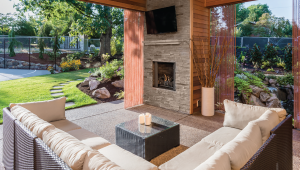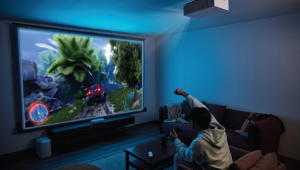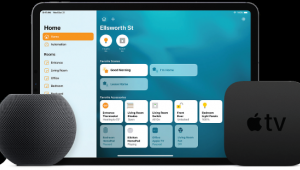System Building Advice, Part 2

Plan for Service
No matter how well your system was designed, how perfectly it was installed, or how much money you spent on electronics, at some point it will need servicing. This could be as simple as rebooting a component that has locked up, to adding or replacing something that has broken or needs upgrading. A bit of planning up front can make these tasks easier on you (or your installer) in the future.
Electronics should ideally be housed in their own temperature-controlled room or closet. This provides the best option for wire and cable management and not only looks more attractive, but makes the system far easier to service. Using a large, professional Middle Atlantic or similar rack on casters will allow you to easily store equipment and keep wire runs neat and tidy. The back and side panels of these racks are also removable, giving you plenty of access to the “business end” of your gear.
If a dedicated equipment closet isn’t possible, choose a rack or cabinet that’s purpose-built to hold AV gear and that allows access to the rear panels. I’m a big fan of Salamander Designs as they make furniture that not only looks nice and is well-built but is designed to make AV gear accessible. If the equipment has to go into a traditional base cabinet, be sure to leave all wiring long enough so you can pull the equipment out of the cabinet to work on it.
I can assure you from personal experience that having to check a connection with your head stuffed into the back of cabinet with a flashlight in your mouth is no fun.
Don’t Be Budget-Blind
Years of client meetings have confirmed for me that the AV system is almost always the last item on the shopping list. Clients routinely come to us after picking out cabinetry, countertops, window treatments, appliances, carpet and flooring, landscape design, etc. and then say, “Oh my gosh! I’m so over budget on everything else! I have to scale my AV budget way back!” I get it: unlike countertops and lighting, AV gear is superfluous. But saving a few dollars up front here can also mean a sacrifice of future enjoyment. (If the budget absolutely isn’t there, then at least prewire for the future when your finances might be different.)
There are a few areas where I always encourage customers to “buy up” to improve the overall performance, usability, or lifespan of a system. As I mentioned in my previous blog, this includes getting the best subwoofer you can afford. I also recommend getting a high-performance AV receiver as it functions as the system’s backbone. Another area you’ll regret skimping on is a good smart remote control. Sure, that $600 (or more) line item might seem like a lot, but it’s going to serve as your primary interface when interacting with the system for years to come.
Don’t Box the TV
Aside from suggesting that clients always purchase the biggest TV they can fit into their space (in over 20 years, not a single person has come back and said, “Boy, I wish I’d gone smaller…”), I generally advise against the idea of boxing a TV into a recessed opening. Sure, this installation strategy will allow the screen to sit totally flush with the wall, but it also has the potential to create trouble.
Modern flat-panel TVs on a flat mount extend less than 4 inches off the wall &mdas; just a little more than a framed artwork. Also, installing a set in a recessed opening will make it difficult to service after the fact and creates ventilation issues that can shorten the TV’s lifespan. But the biggest drawback is that when you replace the TV down the road — something that will inevitably happen — you’ll be limited to models that can fit in the existing opening.
Bigger Drivers Are Better
When our company started, we would routinely use dinky in-ceiling speakers that had the same form factor as recessed can lights. Sure, they were small and unobtrusive, but their 5-inch woofers didn’t convey any weight when playing music. One of the best ways to improve the sound quality of a whole-house audio distribution system is to use speakers with large drivers. Virtually every distributed audio system that we now install uses 8-inch (or even larger) drivers, which allows the speaker to provide full-range sound. And with new designs featuring micro-thin bezels, these far better-sounding speakers are barely larger than the small ones of old.
The truth is, people rarely notice speakers installed in your ceiling (especially if they are painted the same color). I recently replaced the 6-inch speakers in my dining room with 10-inch models from Origin Acoustics, and while the cut-out was only 2 inches larger in diameter, the 10-inch speakers provided massively better sound.
The Author
For the past 20 years, John Sciacca has worked as a custom installer in South Carolina. In his free time, he enjoys drinking craft beer and watching movies on his 7.2.6 surround system.
- Log in or register to post comments





























































